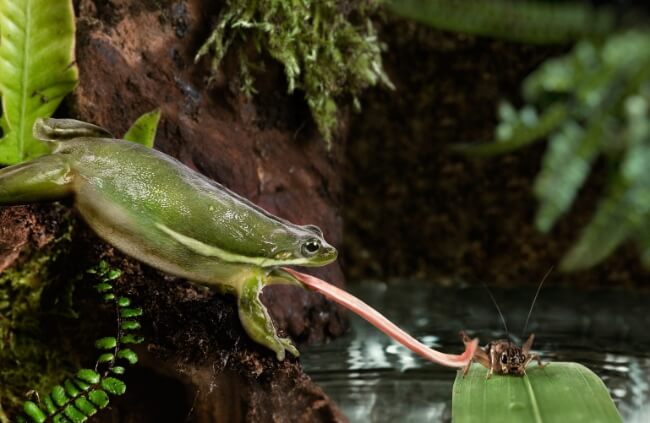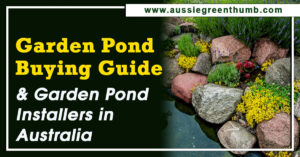Making your frog friendly garden may not seem like the wisest choice, especially if the thought of frogs makes your spine crawl. Yet these amphibious creatures are one of the best critters that you could encourage into your garden.
A garden without frogs is like a safari park without lions. These seemingly innocuous creatures may look cute and friendly, but they are the terror of the waterways, menacing their prey with an almost pacifying stealth.
More...
Creating a Frog Friendly Garden
What you may not know about the garden frog is that they can cope with climate diversity like no other animal. It’s not uncommon to find them in the snowfields or even surviving in desert wastelands. Yet each species has their own territory and preferred conditions and removing them from these habitats is quickly causing their demise.
It’s best not to introduce frogs into your garden because if the conditions are not perfect, they may die, leave your garden, or wreck habitats of other frogs that live in the area. Instead seek to encourage them into your garden and they will come.
What are the Benefits of Frogs in the Garden?

Creating a place for garden frogs in your yard is very beneficial. Frogs are bug and critter devourers and will feast on many of your problematic garden pests. Mosquito larvae, sowbugs and caterpillars are all common delicacies for the garden frog.
Plus, they will often forage on the outer foliage of some plants – especially vegetables. These leaves are most accepted by them when they are in some state of decay which means they are often unfit for human consumption.
If you have children living with you an added benefit is allowing them to interact with your frogs. Children will always find these amphibians delightful, even if they aren’t prepared to pick them up or hold them. BTW – if you do try to pick up a garden frog make sure your hands are moist so that you don’t harm their protective skin.
The downside of encouraging frogs is that they are common food for snakes which may, in turn, bring these undesirables into your garden as well.
How to Encourage Frogs into Your Garden?
While most gardeners tend to opt for a specific frog pond it’s not essential to do this. Provided that frogs can have access to pools of water, whether it be in a bucket or an unused bird bath, they will find your garden hospitable. In fact, the moister your garden is, the more chance frogs will start to inhabit your yard.
The benefit of having a frog pond is that you have more control over what takes place in them. Allowing pools of water to occur in your garden may not be a good form of mosquito control so if mosquitoes are a common pest in your yard then a pond may be the best option.
A pond that encourages garden frogs is one that is not too deep, offers some plant life for protection and food, rocks for sunning on and still places to breed. These ponds can accommodate some fish but choose varieties that aren’t likely to find frog larvae or tadpoles a desirable food source.
It is only recently that we have started realising those frogs play an important role in our garden. Many gardeners are now trying to attract frogs into their gardens as they realise the benefits that are associated with them. They are great at keeping the insect population to a minimum and probably better at doing this than spiders.

Reasons Why You Don’t Have Frogs in Your Garden
If you don’t have many of them living in your garden then you may find your garden is more fatigued than you think. Read on to find out why frogs don’t reside in some gardens….
Lack of Water Source
For frogs to exist in your garden there needs to be a welcome water source. A pond that is not too deep (no more than 30 cm – 11.8 in) is able to accommodate frogs quite well especially if it is still water. What about the breeding of mosquito larvae, I hear you ask? Never mind. Frogs love mosquitoes for breakfast, lunch, and tea.
Hiding places
Frogs need somewhere to hide. Most people will attract frogs using a pond as the water source. If the environment around the pond is sparse then you will have limited success in attracting frogs to your garden. Reeds, waterlilies, and any other water plants are great to conceal an entire frog family.
Chemical Sprays
Frogs are able to absorb chemicals through their skin and may even eat insects poisoned by chemicals. If you are wanting to attract and keep frogs in your garden, try using some alternatives to chemical sprays.
Published on June 4, 2023 by Gary Clarke
Last Updated on November 20, 2023




